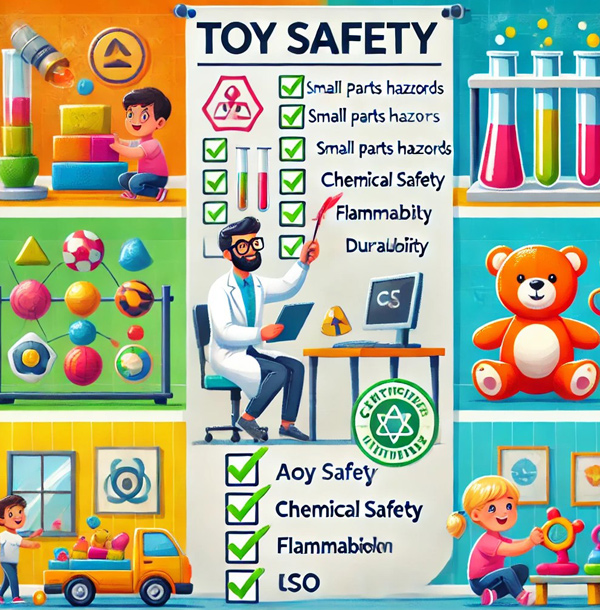Table of Contents
Toys play a crucial role in a child’s development, providing entertainment, education, and sensory stimulation. However, ensuring their safety is just as important as their design and functionality. Governments and regulatory bodies worldwide have established strict toy safety standards to prevent hazards such as choking, poisoning, and injuries. Understanding these regulations helps parents, manufacturers, and retailers ensure that toys are both fun and safe for children.
Key Toy Safety Standards Around the World
Various organizations have developed comprehensive guidelines to ensure toy safety. Some of the most recognized standards include:
- ASTM F963 (USA) – The American Society for Testing and Materials (ASTM) sets rigorous guidelines under the Consumer Product Safety Improvement Act (CPSIA). These include tests for small parts, flammability, heavy metal content, and mechanical hazards.
- EN 71 (Europe) – The European Standard for toy safety, EN 71, covers a wide range of hazards, including chemical, physical, and electrical safety. Compliance with EN 71 is mandatory for toys sold in the European Union (EU).
- ISO 8124 (International) – The International Organization for Standardization (ISO) has created ISO 8124 to align global safety requirements for toys, ensuring consistency in manufacturing and testing across different markets.
- CCC (China Compulsory Certification) – China has its own safety certification, ensuring that all toys meet national safety requirements before they can be sold within the country.
- AS/NZS ISO 8124 (Australia/New Zealand) – These countries adopt a combination of international and national standards to ensure toys meet high safety requirements.

Common Toy Hazards and How Standards Prevent Them
- Choking Hazards – Small parts can pose serious risks for young children. Safety standards require toys to undergo rigorous small parts testing to prevent choking incidents.
- Chemical Exposure – Toys must not contain hazardous chemicals such as lead, phthalates, or formaldehyde, which could be toxic if ingested or inhaled.
- Flammability Risks – Standards regulate materials used in toys to ensure they do not easily catch fire.
- Mechanical and Physical Hazards – Sharp edges, pinch points, and easily breakable parts can cause injuries. Safety tests ensure toys are durable and free of sharp components.
- Electrical Safety – Battery-operated and electronic toys undergo inspections to prevent risks like overheating, electric shocks, or short-circuiting.
How Consumers Can Ensure Toy Safety
Parents and caregivers can take proactive steps to ensure their children play safely:
- Always check for safety labels such as “ASTM F963 certified” or “CE mark” before purchasing a toy.
- Read age recommendations to ensure the toy is suitable for the child’s developmental stage.
- Inspect toys regularly for damage and dispose of broken ones immediately.
- Avoid counterfeit toys, as they may not meet official safety standards.
Conclusion
Toy safety is a shared responsibility among manufacturers, regulators, and consumers. Adhering to established safety standards ensures that children can play without unnecessary risks. By being informed and vigilant, parents can provide a safe and enjoyable play environment for their little ones. Always choose quality-certified toys and stay updated on the latest safety recalls and regulations to protect children from potential dangers.
